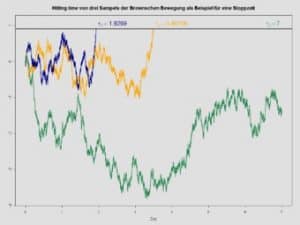
Fact To File’s Ryanair Showdown: True Champion or Mere Hype at Cheltenham 2025?
The 2025 Cheltenham Festival, happening from March 11-14 over 28 races, launches a defining moment in the Ryanair Chase (3:20 PM, March 13)—what will Fact...
 There are countless betting strategies for horse racing out there, all with a different method which the person who created them believes is successful. Each strategy or approach has its own merits, and themost important factor is whether it makes a long term profit.
There are countless betting strategies for horse racing out there, all with a different method which the person who created them believes is successful. Each strategy or approach has its own merits, and themost important factor is whether it makes a long term profit.
But there's a deeper layer to this. Often, gamblers select a strategy, or reject one, because it aligns or conflicts with their personal style or wagering habits.
For instance, if a horse racing strategy highlights horses with odds of 20/1 or higher, someone accustomed to betting on favorites may dismiss the system after observing a few outcomes since it deviates from their norms. Similarly, those who prefer consistent bet sizes won't favor a system that adjusts stakes with each wager.
Each of us has techniques we're accustomed to, and uncovering a horse racing system that aligns with your current approach can be rewarding. That's why the experts at Which Bookie have crafted a collection of articles about horse racing strategies, aiding you in finding the right one.
In this series' opening segment, we're diving into the Martingale Horse Racing betting tactic, examining its suitability and functionality.
Be sure to head to our horse racing streams Visit the page to discover links for watching races you've placed bets on.
This approach caters to those who favor betting on favorites and are open to varying their stakes. Alternatively, it may perplex those who look beyond favorites or favor consistent stakes, given its uniqueness.
The Martingale's origins trace back to roulette, adapted here for horse racing. Roulette players betting on red or black increased their stakes post-loss, anticipating eventual wins to recover their losses.
Original proponents of this system believed a 50/50 chance existed when choosing red or black in roulette, leading to the notion that a loss would likely be followed by a win. This belief weakened upon the realization that consecutive losses were possible, tempering expectations.
 The plan used for betting at a horse racing bookie It closely mirrors the roulette plan with some tweaks for sports betting. Because horse racing rarely presents even odds, the risks escalate.
The plan used for betting at a horse racing bookie It closely mirrors the roulette plan with some tweaks for sports betting. Because horse racing rarely presents even odds, the risks escalate.
However, in horse racing, the potential for higher rewards is compelling, offering payoffs greater than even money. Such insights mean you should only employ this plan if you're confident in consistently selecting winners; otherwise, your betting funds might quickly evaporate.
Despite having a varied staking method, the Martingale plan system is straightforward to adopt, particularly if you've used variable stakes before. Initiate by wagering a small amount, ideally 1% of your betting fund. Success allows you to continue with the same stake, reverting to your starting point after each win.
If the initial bet fails, double your subsequent bet on a different horse, following this pattern either until the maximum stake is reached, you win, or funds run out. A win prompts a return to the initial 1% stake.
Using a £100 fund and starting at 1%, a bet represents £1.
| Selection | Stake | Finished | Balance |
| Horse #1 | £1 | lost | £99.00 |
| Horse #2 | £2 | lost | £97.00 |
| Horse #3 | £4 | WON @ 2/1 | £105.00 |
| Horse #4 | £1 | lost | £104.00 |
| Horse #5 | £2 | lost | £102.00 |
| Horse #6 | £4 | lost | £98.00 |
| Horse #7 | £8 | lost | £90.00 |
| Horse #8 | £16 | lost | £74.00 |
| Horse #9 | £20.00 | WON @ 3/1 | £134.00 |
| Horse #10 | £1 | lost | £133.00 |
| Horse #11 | £2 | lost | £131.00 |
| Horse #12 | £4 | WON @ 6/4 | £137.00 |
The Martingale staking plan offers benefits, especially its ease of understanding. Newcomers often start with small stakes, easing entry barriers compared to requiring £20 at the outset.
A key advantage is having greater stakes on winning selections within a sequence. Winning after two losses implies the highest stakes were on that victorious horse, ensuring recovery of past losses and more.
In addition, this strategy transcends horse racing constraints. As a staking method rather than a selection tool, it virtual racing just as easily as the real thing.
introduces challenges, like the impact of winning or losing streaks. During a winning streak, only minimum stakes apply on subsequent wins, limiting profit.
Long losing streaks, in particular, risk a swift depletion of your betting fund, owing to rapidly escalating stakes.
Bookmaker restrictions on bet sizes may also arise as stakes increase, but this can be circumvented through betting exchanges. never limit your stakes .
In summary, the Martingale strategy is user-friendly but demands resolve and robust finances. It's a mechanism to augment stakes following losses to ensure a win compensates for prior losses and adds extra. However, prolonged winning streaks yield minimal stakes, while losing streaks can quickly exhaust your funds.
If high stakes make you uneasy or your selection strategy is unreliable, this might not be your ideal approach. Don't fret, though—there are numerous alternatives! Explore other articles in this series for additional horse racing betting tactics.
